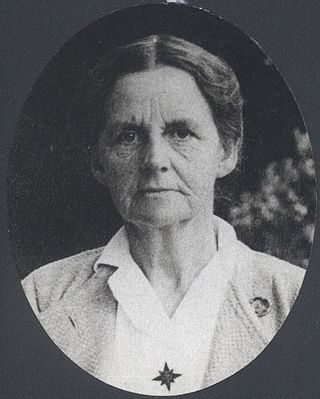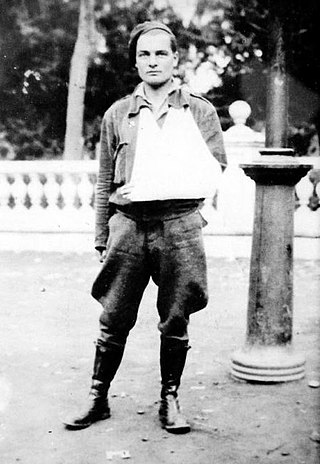
Eleanor Florence Rathbone was an independent British Member of Parliament (MP) and long-term campaigner for family allowance and for women's rights. She was a member of the noted Rathbone family of Liverpool.

Sir Charles Aubrey Smith was an English Test cricketer who became a stage and film actor, acquiring a niche as the officer-and-gentleman type, as in the first sound version of The Prisoner of Zenda (1937). In Hollywood, he organised British actors into a cricket team, much intriguing local spectators.

Wilfrid Hubert Wace Roberts was a radical British Liberal Party politician who later joined the Labour Party.

Katharine Marjory Stewart-Murray, Duchess of Atholl, DBE, known as the Marchioness of Tullibardine from 1899 to 1917, was a Scottish noblewoman and Scottish Unionist Party politician whose views were often unpopular in her party.
La Conquista del Estado was a magazine based in Madrid, Spain.
Sir Harold Vincent Tewson was an English trade unionist who served as General Secretary of the Trades Union Congress (TUC) from 1946 to 1960.

Estella "Stella" Agsteribbe was a Dutch gymnast. She won the gold medal as member of the Dutch gymnastics team at the 1928 Summer Olympics in her native Amsterdam. The team was inducted into the International Jewish Sports Hall of Fame in 1997.

Felicia Mary Browne was an English artist and communist. She was the only British woman combatant and first British volunteer to die in the Spanish Civil War. Her body was not recovered.

An attack was carried out by the Jewish paramilitary group Haganah on the Christian-owned Semiramis Hotel in the Katamon neighborhood of Jerusalem during the 1947–1948 Civil War in Mandatory Palestine.
Sir Richard Lodowick Edward Montagu Rees, 2nd Baronet was a British diplomat, writer, humanitarian, and painter.
Glyn Stone is Professor of International History at the University of the West of England. He gained a BA (Honours) degree at the University of Lancaster in 1970, an MA History at the University of Sussex in 1971, and his PhD at London School of Economics and Political Science in 1986. He became a Fellow of the Royal Historical Society in 1995. He became a lecturer at Bristol Polytechnic, the precursor of UWE in 1972 and became Dean of the Faculty of Humanities in 2000 until its merger with Social Sciences and Languages in 2003.
Frida Knight (1910–1996) was an English communist activist and author.

Federico Melchor Fernández was a Spanish journalist and communist politician. He was one of the leaders of the Communist Youth Union of Spain. During the Spanish Civil War (1936–39) he was general director of Propaganda in the government of Juan Negrín. He became a member of the Central Committee of the Communist Party of Spain.

Carlos Esplá Rizo was Spanish Left Republican politician and journalist. For several months during the Spanish Civil War (1936–1939) he was the first Spanish Minister of Propaganda.

The National Defence Council was the governing body in Republican Spain at the end of the Spanish Civil War (1936–1939). The council seized power with Colonel Segismundo Casado's coup on 5 March 1939 when it was clear that the Republicans had lost the war. The leaders hoped to negotiate an end to hostilities with the rebel forces led by General Francisco Franco. However, Franco insisted on unconditional surrender, and on 26 March 1939 launched the final offensive of the Spanish Civil War. By the end of the month he controlled the whole country. Most of the council members escaped into exile on British warships.

Edith Mary Pye was an English midwife and International Relief Organizer. She worked in maternity hospitals for women refugees and was the president of the British Midwives Institute. Along with being a member of Friends Germany Emergency Committee, Red Cross, and the International Commission for the Assistance of Child Refugees. In 1907, she became Superintendent of District Nurses in London, following her lengthy career in international relief efforts and as a midwife. She died at her home in Somerset in 1965.
Fernanda Jacobsen was commandant of the Scottish Ambulance Unit (SAU) which provided humanitarian assistance in three convoys during the Spanish Civil War (1936–1939). She was appointed an Officer in the Order of the British Empire (OBE) for her work in Spain, which continued through the end of the war after the rest of the unit had returned home.
Israel Finestein QC MA (1921–2009), an English barrister and Deputy High Court Judge, was a leader and historian of British Jewry. His writings analysed the history of divisions amongst the Jews of England; in varied roles he worked for communal change and reconciliation.
The Anti-Nazi Council was a London-based organisation of the 1930s. Initially part of the left-wing anti-fascist movement, it gained political significance when allied to Winston Churchill, though at the time its influence was largely covert. Between around 1935 and 1937 it was a vehicle for Churchill's attempts to form a cross-party alliance against appeasement of the fascist dictatorships. The group behind it used the title Focus in Defence of Freedom and Peace, and variants, and is sometimes known as the Focus Group.

The Carritt family is an English political family based in Oxford, known for its involvement in anti-fascist activism, Marxist politics, and academic achievements within Oxford University. For much of the 20th century, the involvement of the family revolved around the Communist Party of Great Britain, as various members have traditionally been members of the British communist movement and have served as notable anti-fascist and anti-colonial activists, spies, philosophers, professors, politicians, newspaper editors, and revolutionaries.